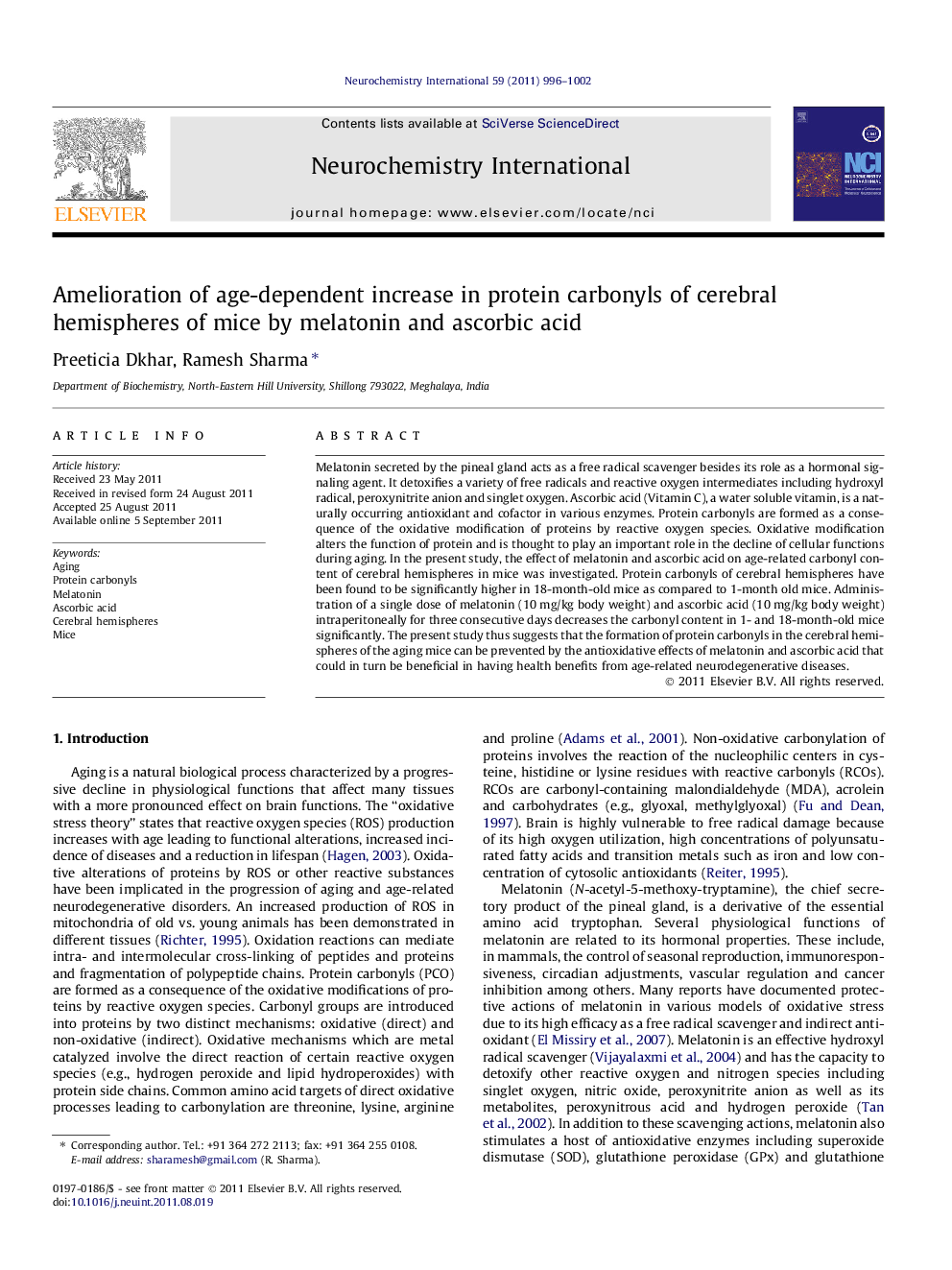| Article ID | Journal | Published Year | Pages | File Type |
|---|---|---|---|---|
| 2201173 | Neurochemistry International | 2011 | 7 Pages |
Melatonin secreted by the pineal gland acts as a free radical scavenger besides its role as a hormonal signaling agent. It detoxifies a variety of free radicals and reactive oxygen intermediates including hydroxyl radical, peroxynitrite anion and singlet oxygen. Ascorbic acid (Vitamin C), a water soluble vitamin, is a naturally occurring antioxidant and cofactor in various enzymes. Protein carbonyls are formed as a consequence of the oxidative modification of proteins by reactive oxygen species. Oxidative modification alters the function of protein and is thought to play an important role in the decline of cellular functions during aging. In the present study, the effect of melatonin and ascorbic acid on age-related carbonyl content of cerebral hemispheres in mice was investigated. Protein carbonyls of cerebral hemispheres have been found to be significantly higher in 18-month-old mice as compared to 1-month old mice. Administration of a single dose of melatonin (10 mg/kg body weight) and ascorbic acid (10 mg/kg body weight) intraperitoneally for three consecutive days decreases the carbonyl content in 1- and 18-month-old mice significantly. The present study thus suggests that the formation of protein carbonyls in the cerebral hemispheres of the aging mice can be prevented by the antioxidative effects of melatonin and ascorbic acid that could in turn be beneficial in having health benefits from age-related neurodegenerative diseases.
► Protein carbonylation in cerebral hemispheres is higher in old mice than young ones. ► Melatonin and ascorbic acid reduce the protein carbonyl content in the cerebral hemispheres of mice. ► It is concluded that both these antioxidants reduce protein oxidative damage in mice.
